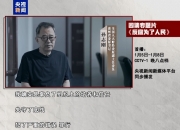美国犹他大学Karen C. Schliep团队研究了子宫内膜异位症的类型与卵巢癌风险的相关性。该项研究成果发表在2024年7月17日出版的《美国医学会杂志》上。
子宫内膜异位症与卵巢癌症风险增加相关;然而,子宫内膜异位症亚型与卵巢癌症组织类型之间的关系尚不明确。
为了探讨子宫内膜异位症亚型与癌症发病率的关系,研究组进行了基于犹他州人口数据库的人群队列研究。该队列是通过将78893名患有子宫内膜异位症的女性与没有子宫内膜异位的女性以1:5的比例进行匹配而组成的。通过电子健康记录确定子宫内膜异位症病例,并将其分为浅表子宫内膜异位、卵巢子宫内膜异位瘤、深浸润子宫内膜异位或其他类型。主要结局为每10000名女性的估计调整后风险比(aHR)、调整后风险差异(aRDs),以及患有各种类型子宫内膜异位症的女性与未患有子宫内膜异位病的女性的总体卵巢癌症、I型卵巢癌症和II型卵巢癌症的95%CI。模型考虑了社会人口因素、生殖史和过去的妇科手术。
在这个犹他州队列中,首次诊断子宫内膜异位症的平均(SD)年龄为36(10)岁。有597名女性患有卵巢癌症。患有子宫内膜异位症的女性患卵巢癌症的风险高于未患子宫内膜异位病的女性(aHR,4.20[95%CI,3.59-4.91];aRD,9.90[95%CI,7.22-12.57]),I型卵巢癌症的风险尤其高(aHR、7.48[95%CI、5.80-9.65];aRD、7.53[95%CI和5.46-9.61])。患有深度浸润性子宫内膜异位症和/或卵巢子宫内膜瘤的女性中,所有卵巢癌(aHR,9.66[95%CI,7.77-12.00];aRD,26.71[95%CI;20.01-33.41])、I型癌症(aHR:18.96[95%CI:13.78-26.08];aRD:19.57[95%CI:13.80-25.35])和II型癌症(aHR、3.72[95%CI、2.31-5.98];aRD:2.42[95%CI=−0.01至4.85])的卵巢癌症风险最高。
研究结果表明,患有卵巢子宫内膜瘤和/或深度浸润性子宫内膜异位症的女性患癌症的风险显著增加。这一人群可能受益于有关卵巢癌症风险和预防的咨询,并可能成为靶向筛查和预防研究的重要人群。
附:英文原文
Title: Endometriosis Typology and Ovarian Cancer Risk
Author: Mollie E. Barnard, Leslie V. Farland, Bin Yan, Jing Wang, Britton Trabert, Jennifer A. Doherty, Huong D. Meeks, Myke Madsen, Emily Guinto, Lindsay J. Collin, Kathryn A. Maurer, Jessica M. Page, Amber C. Kiser, Michael W. Varner, Kristina Allen-Brady, Anna Z. Pollack, Kurt R. Peterson, C. Matthew Peterson, Karen C. Schliep
Issue&Volume: 2024-07-17
Abstract:
Importance Endometriosis has been associated with an increased risk of ovarian cancer; however, the associations between endometriosis subtypes and ovarian cancer histotypes have not been well-described.
Objective To evaluate the associations of endometriosis subtypes with incidence of ovarian cancer, both overall and by histotype.
Design, Setting, and Participants Population-based cohort study using data from the Utah Population Database. The cohort was assembled by matching 78893 women with endometriosis in a 1:5 ratio to women without endometriosis.
Exposures Endometriosis cases were identified via electronic health records and categorized as superficial endometriosis, ovarian endometriomas, deep infiltrating endometriosis, or other.
Main Outcomes and Measures Estimated adjusted hazard ratios (aHRs), adjusted risk differences (aRDs) per 10000 women, and 95% CIs for overall ovarian cancer, type I ovarian cancer, and type II ovarian cancer comparing women with each type of endometriosis with women without endometriosis. Models accounted for sociodemographic factors, reproductive history, and past gynecologic operations.
Results In this Utah-based cohort, the mean (SD) age at first endometriosis diagnosis was 36 (10) years. There were 597 women with ovarian cancer. Ovarian cancer risk was higher among women with endometriosis compared with women without endometriosis (aHR, 4.20 [95% CI, 3.59-4.91]; aRD, 9.90 [95% CI, 7.22-12.57]), and risk of type I ovarian cancer was especially high (aHR, 7.48 [95% CI, 5.80-9.65]; aRD, 7.53 [95% CI, 5.46-9.61]). Ovarian cancer risk was highest in women with deep infiltrating endometriosis and/or ovarian endometriomas for all ovarian cancers (aHR, 9.66 [95% CI, 7.77-12.00]; aRD, 26.71 [95% CI, 20.01-33.41]), type I ovarian cancer (aHR, 18.96 [95% CI, 13.78-26.08]; aRD, 19.57 [95% CI, 13.80-25.35]), and type II ovarian cancer (aHR, 3.72 [95% CI, 2.31-5.98]; aRD, 2.42 [95% CI, 0.01 to 4.85]).
Conclusions and Relevance Ovarian cancer risk was markedly increased among women with ovarian endometriomas and/or deep infiltrating endometriosis. This population may benefit from counseling regarding ovarian cancer risk and prevention and could be an important population for targeted screening and prevention studies.
DOI: 10.1001/jama.2024.9210
Source: https://jamanetwork.com/journals/jama/fullarticle/2821194
版权声明
本站仅提供信息存储空间服务,不拥有所有权,不承担相关法律责任。文章内容、图片素材等内容均为用户上传,仅供学习参考。如有侵犯您的版权,请联系我们,本站将在三个工作日内改正、删除。







